It was a warm Saturday afternoon, Match of the Day, May 1973. A huge crowd had packed into the Sydney Cricket Ground to see South Sydney Rabbitohs against St George.
A titanic battle between two great rivals saw the scores locked at 11-11, and with just three minutes remaining South Sydney were granted a penalty on the halfway line. Eric Simms, arguably rugby league’s greatest goal-kicker, couldn’t make the distance. Rabbitohs captain Bob McCarthy took a gamble and threw the ball to the 21-year- old rookie Claude Williams.
A strapping young Wiradjuri Aboriginal man with a smile as broad as his shoulders, a shock of wavy black hair and a Zapata moustache, Williams was a surprise inclusion in the starting line-up. According to the match report in the Sydney Morning Herald, he was “hardly sighted in general play”, but Williams nonchalantly caught McCarthy’s pass and slowly fashioned a kicking mound out of the turf.
“The crowd were getting impatient, but I needed to build it high to make the distance,” remembers Williams. “I wasn’t nervous, because it was so far out nobody expected me to make it.”
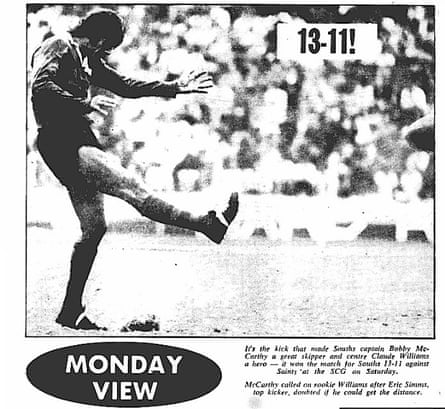
After a long run-up, Williams put his right boot firmly through the ball and sent it sailing majestically between the uprights to a rapturous roar from the Rabbitohs supporters. The first man to embrace him was Simms, and in the dressing room after the match, Channel Nine television personality and fanatical Rabbitohs fan Don Lane grabbed him by the collar, drew him close and planted a kiss firmly on his forehead. “Thank God Bobby gave Claude the kick,” said Simms, “I never would have made it that far.” Williams was asked to appear on rugby league’s weekly television show. A star, it seemed, was in the making.
“I never went on that program,” says Williams. For all the accolades he received in the press after the winning kick, his memory is of returning to work on the Monday. A storeman at a cosmetics company in Surry Hills, he was feted by his colleagues. “I walked in and all of them came round to our section and said ‘good onya Claude, fantastic kick’. You know for me, it was no big deal. I was never one to blow my own trumpet or act the poser. I had confidence in myself, but I didn’t talk myself up.”
It’s characteristic of Williams that he skipped the scheduled television appearance to spend the day with his mate and two girls on a harbour ferry. “You know, it was in the paper about me scoring that kick,” he says. “My mate was telling the girls that I was the bloke that scored the kick. I was just 21, a shy kind of kid, in those days I wasn’t a talker. I wasn’t confident speaking to the media – in those days there was no media training. I never had that experience and confidence to get in front of a TV camera and talk about it. There weren’t too many players who were media savvy in those days.”
Self-promoter he was not, but from a young age Claude Williams was destined to be a sportsman. At 15 he was opening both the bowling and the batting for the Sydney Cricket Club in the AW Green Shield competition. Indeed several years before that kick for the Rabbitohs, he made his debut at the SCG in a City vs Country representative cricket match. “It was like hallowed turf,” he remembers fondly.
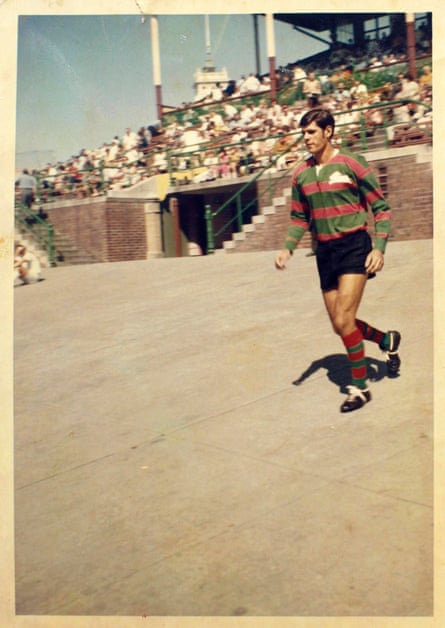
Rugby league, however, became the focus after Williams helped Zetland win the 1969 C grade grand final against La Perouse at Redfern Oval. As Williams tells it, the legendary Rabbitohs captain John Sattler picked him out of the pack, silencing the rowdy dressing room as he entered to congratulate them on their victory.
“I was sitting in the corner of the change room, and he came over, put his hand over and said, ‘Hi, I’m John Sattler’. I was a really quiet kid in those days, you know I was very reserved and introverted. I said ‘Yes, how are you John, I’m Claude’. He said, ‘Yes, I know who you are Claude, I just watched you play and I was very impressed with your game. I’m here to ask you if you’d like to play senior grade next year.’.
Williams’s father encouraged his son to seize the opportunity. “I was in two minds,” he says. “I was only 16, and it wasn’t as if I lacked confidence, but I thought I wouldn’t mind playing another year or two and mature a bit. But Dad said, ‘No I think you should give it a go.’” His father, of course, was the iconic country and western singer Claude ‘Candy’ Williams. Mates with the great Aboriginal leaders Chika Dixon and Charlie Perkins and a regular performer at the Foundation for Aboriginal Affairs, Candy was a star in his own right, yet he could be found at all of his son’s matches, no matter the level.
It was the kind of support that Williams needed, but didn’t get from rugby league. In one Rabbitohs game, when he lined up against a childhood hero, Williams was shocked by what he heard. “I was on the wing, I got the ball and as I ran inside he yelled out ‘kill that black cunt!’ I thought, fuck! It sort of threw me. It stung me. It really hurt inside – it affected me that. When he got the ball I’d chase him to try and get a square-up, but he was quick and I never got the chance.”
Williams only played a handful of top-flight rugby league matches, but he refuses to dwell on the possibilities. He freely admits that Clive Churchill’s Rabbitohs – “that fantastic team” he calls them – was near impossible to break into as a young player.
“The career depends on what you produce on the field,” he says firmly when I ask him whether he lacked the requisite streak of self-interest. And the racism? “It was just as bad for the Chinese,” he says. “They were called chinks, the Europeans – the Italians and the Greeks – they were called wogs and dagoes, so they copped it just as much.”

Williams walked away from rugby league to pursue his great love – basketball. From a multitalented family (his first cousin Harry was the first Indigenous man to represent the Socceroos at a World Cup in 1974), throughout his short career at the Rabbitohs he had moonlighted as a guard with Eastern Suburbs in Sydney’s premier basketball competition. Monday and Friday basketball training bookended Wednesday night games, while Tuesdays, Thursdays and weekends were dedicated to rugby league. “My whole week – basically six days – was taken up with basketball or rugby league,” he says. All, of course, while drawing his wage on the factory floor.
In 1974 and 1975 Williams was selected for the New South Wales basketball team in the Nationals, but his contract with South Sydney prevented him from participating. “I wasn’t getting paid much, but I was still contracted,” he explains. “For two years I said, ‘I can’t go, I’m sorry.’”
Walking away from rugby league to pursue a career in basketball might have seemed like a step backwards, but it connected him to something far bigger than sport.
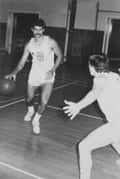
The 1970s was a time of enormous change in the consciousness of Indigenous people. A group of young black radicals including Gary Foley, Bruce McGuiness, Paul Coe, Bob Maza, Denis Walker and Bobbi Sykes were at the crest of a new Black Power movement in Brisbane, Redfern and Fitzroy. Black empowerment was the call, self-determination was the aim. Williams was never involved in the politics – “mate, I was too busy playing sport,” he grins – however just as the nascent Aboriginal Black Power movement looked to the United States for inspiration and fraternal support, Williams was influenced by a trip to the west coast of America.
Basketball took him places where rugby league couldn’t. In 1977 Williams travelled to America, Canada and Hawaii with the NSW Basketball team. The bumper crowds, marching bands, orchestras and cheerleaders of college basketball were a shock to the Australians, but for Williams the off-court action was just as enlightening.
“They thought we were English,” he says. “I found the African Americans knew a little bit about Aboriginal Australia, and when I spoke to them it was like an instant bond. Like we’d come from the same footsteps – there was an instant respect. It was the same with the African American players in the NBL, I used to connect with them stronger than most. They had a higher respect for me as an Aboriginal man.”
Returning home, Williams landed a job as a clerk with the council and played with the City of Sydney Astronauts in the early seasons of the National Basketball League, which was launched in 1979. The bulging lump that protrudes from the knuckle on his right hand is a war scar testament to his rough and ready style of play. By 1983, the Astronauts became the Sydney SuperSonics, and the legendary American import Owen Wells signed on as player-coach. Wells fired a rocket up Australian basketball, and with Williams in the team, lead the SuperSonics to a record-breaking 16-game winning streak.

“We connected over music,” says Williams. “He was into a lot of jazz – he was different, most of the African Americans who came out were all r&b. In the dressing rooms it was always ghetto blasters with the latest r&b and soul music, but not many were into jazz. Owen was highly intelligent, highly educated and knew his music. He was very stylish and classy – an inspiration to his team-mates.”
As Williams recounts memories of his old friend, it’s hard to ignore the influence. The wild hair of Williams’s youth has given way to a slicker short-back-and-sides, and his handlebar moustache has been trimmed down to a thin pencil above his upper lip. A comb is always handy in his bag. Gold jewellery adorns his fingers and neck, several rubber bracelets with the words “Deadly Vibe” wrap around each wrist, and he’s wearing a Miles Davis t-shirt. He’s equally comfortable discussing the finer points of Betty Davis, The Undisputed Truth or The Isley Brothers at Lazy Bones Lounge in Marrickville as he is playing snooker in local competitions.
In 1987, Williams became Wells’s assistant coach and as they travelled around the country they roomed together, sharing basketball tactics and listening to Blue Train by John Coltrane. Their friendship was an intellectual bond. After 101 NBL games, Williams was ready for a new challenge.
The composition of Sydney basketball was set to change for a third time within a decade. In October 1987, the owner of the SuperSonics, Mike Wrublewski, formed a new franchise called the Sydney Kings. A merger of the SuperSonics and the West Sydney Westars, the press reported the Kings would be “the saviour of basketball in this city”.

Williams was appointed as head coach, becoming one of just a few Australians to take the reigns of an NBL team and the first and only Aboriginal basketball coach. Rugby league commentator and historian Brad Cooke reckons Williams was the second Aboriginal coach in any elite sport (Arthur Beetson coached Easts in rugby league in the 1970s).
Williams played the role of front-man, commenting in 1987 that the creation of the Sydney Kings was “a positive step that we are united”. The reality, however, was rather different. The “one team, one city” concept had been advocated for years by Wrublewski, but it was only after mounting financial losses that West Sydney agreed to the idea. The rivalry inevitably seeped from board level into the dressing room. In one infamous incident, team-mates Damien Keogh and Marc Ridlen – formerly of the Westars and SuperSonics respectively – almost came to blows in a match against Illawarra Hawks.
If coaching is all about managing delicate egos, Williams’s job to funnel the players of two teams into one entity was a crash course in diplomacy. “The better players would be used to playing lots of minutes,” he says. “I was a first year head coach, I had all the strategies in place and I knew exactly what I wanted. It wasn’t particularly the team I wanted – I didn’t have carte blanche. There was a compromise between the two clubs with the selection of players. I knew it would take time for the chemistry to develop.”
As the season wore on and results failed to go their way, the Sydney Morning Herald basketball journalist Ian Cockerill concluded: “Although the Kings have assembled a squad of brilliant individuals this year they have failed to congeal as a team and appear in danger of missing the play-offs.”
Miss the finals they did, and by season’s end Williams had accepted an offer from Newcastle Falcons. Wrublewski was notorious for his hands-on, passionate approach, but Williams was continually frustrated by the intrusion of board members in the coaching of the team. His two seasons at Newcastle, however, weren’t much better. “Like a lot of coaches I personally found it difficult to communicate with board members who are businessmen, not basketballers,” he says.
A little over two decades on since his last involvement in top-flight sport, it seems Claude Williams is remembered in flashes and snippets. Few of the basketball and rugby league scribes of the day recall the man, although they all remember the name. There’s bits and pieces on the Sydney Kings website, and of course a few mentions on basketball and rugby league websites.
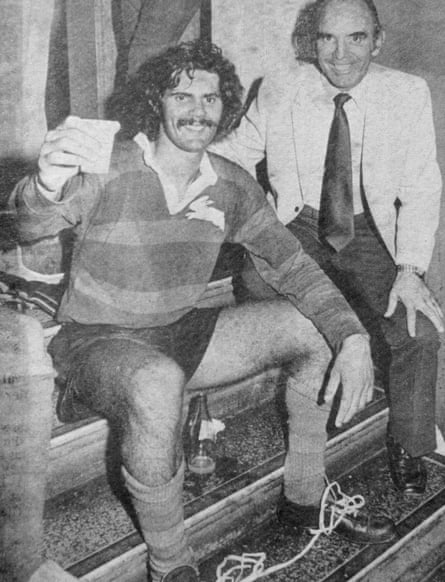
One of these sites, Rebel Rabbitohs, is particularly revealing. ABC journalist Andrew Denton – a man who led the charge for South Sydney to be returned to the NRL in 2001 – tells his favourite childhood memory of listening to the legendary rugby league radio commentator Frank Hyde calling Williams’s goal-kick in 1973. “A couple of years ago I saw Andrew on the corner of Oxford and Crown Street,” says Williams. “I was going to go up to him and introduce myself, but he approached me and mentioned the kick. We had a good chat.”
Like many Indigenous athletes of yore, Williams is best remembered among his own people – recognised as one of the “Black Diamonds” in the Aboriginal and Torres Strait Islander Sports Hall of Fame. He comes from a long line of luminaries from the Wiradjuri nation, including Linda Burney, Paul Coe, Mum Shirl, Anita Heiss, Stan Grant, Wally Carr, Evonne Goolagong-Cawley and David Peachey.
Yet Cooke, who used to run a boxing program with Williams on Koori Radio, reckons he’s been under-utilised by the community. “My best memory of Claude, apart from being the legend and a Black Diamond, was from a boxing trip to Vegas in 2009,” he says. “He went from being an “Uncle” and a godlike figure to getting excited for interviews with legends of boxing like [Muhammad Ali’s biographer] Thomas Hauser and Roberto Duran. He talked to Roberto about his fight against the Aboriginal boxer Hector Thompson.”
For the best part of a decade Williams travelled around Australia running basketball programs for Aboriginal kids with Vibe Australia, and he helped Aboriginal people find work during the 2000 Sydney Olympics as an Indigenous liaison officer at Stadium Australia.
When there’s an event in Sydney’s Aboriginal community, you’ll find Williams there. In 2006, while he was running the boxing radio program, a plaque was unveiled in Glebe to commemorate the great Aboriginal middleweight boxer Dave Sands. The plaque, said Williams in his speech as MC, “is a symbol of our commitment to remember and celebrate the great heroes in our community”. In February, he addressed the crowd at Redfern’s National Centre of Indigenous Excellence to mark the anniversary of the Australian Government’s apology to the Stolen Generation.
The National Centre of Indigenous Excellence turned five this month, and “Uncle Claude” works in the after-school program and the Deadly Young leaders program. He was born just up the road in Camperdown, and you’ll find him every other week in his old stomping ground with his good mate Tony Mundine. Tony, of course, is the father of one of Australia’s greatest sportsmen, Anthony, a man who has also traversed two different sports with great success. There are links and deep roots in these friendships – shared memories, shared histories and shared goals. “I want to give back to these kids and this community,” says Williams. “It’s a challenge.”
Basketball remains a burning passion, and Williams hopes to return to coaching sooner rather than later. Like a tactics junkie needing his fix, to this day he’ll watch college basketball over NBA, where the coaching and strategy is more pronounced. “It’s the greatest game I’ve ever played,” he says. “Basketball is an intelligent game – there’s individual skill and the technical side.”
For a man that has been at the top of his game in rugby league, basketball and junior cricket, incredibly there remains one lingering regret. At 15, while he was at Cleveland Street High School, he was scouted by the NSW Lawn Tennis Association to join their elite program at White City in Paddington. “I was excited, and to be honest, in my heart, that’s what I wanted,” he says.
Cost was the barrier to entry, and the exorbitant fee was out of the family budget. His dream was dashed. “I’d have to say if there’s any regrets, that would be the biggest ever in my life, that I wasn’t able to play tennis,” says Williams. “I honestly think I wouldn’t have played cricket, rugby league or basketball. I believed I was the best. I still know to this day that if I could’ve followed that path I could’ve gone all the way.”
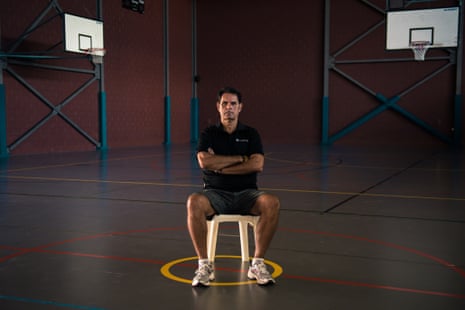
Comments (…)
Sign in or create your Guardian account to join the discussion